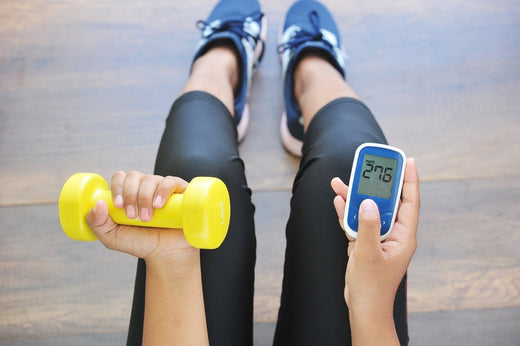
Insulin Control: Effects of Physical Exercise
Share
Insulin control is a key issue for anyone looking to improve their metabolic health, lose weight, or prevent diseases such as type 2 diabetes. Exercise plays a key role in this process, as it is a powerful tool for regulating blood glucose levels and insulin sensitivity. In this article, we explore how exercise can positively impact insulin control and the health benefits it offers.
The Role of Insulin in the Body
Insulin is a hormone produced by the pancreas that regulates blood glucose levels. After a meal, glucose is released into the bloodstream, and insulin allows cells to use this glucose as an energy source. When insulin sensitivity is reduced (a condition known as insulin resistance), blood glucose levels increase, which can lead to the development of prediabetes and type 2 diabetes.
How Exercise Affects Insulin
Physical exercise benefits insulin control in several ways:
1. Increased Insulin Sensitivity
Both aerobic exercise (such as running, walking or swimming) and strength training (exercising with weights) increase insulin sensitivity. This means that muscle cells can absorb glucose more efficiently, reducing blood sugar levels.
2. Immediate Effect After Exercise
During exercise, muscles use glucose as an energy source, which lowers blood glucose levels. In addition, exercise improves glucose uptake by cells independently of the action of insulin, a crucial benefit for people with insulin resistance.
3. Reduction of Body Fat
Excess fat, especially visceral fat (around the organs), is associated with insulin resistance. Regular exercise helps reduce body fat, improving metabolic control.
4. Prevention of Metabolic Diseases
Consistent exercise helps prevent metabolic diseases related to insulin resistance, such as type 2 diabetes and metabolic syndrome. Studies show that active individuals have a lower risk of developing these conditions.
Recommended Exercises to Improve Insulin Control
To maximize the benefits of exercise for insulin control, it is important to include a combination of different types of physical activity:
-
Aerobic Exercise
- Brisk walking, running, cycling or swimming.
- Recommendation: 150 minutes per week of moderate intensity.
-
Strength Training
- Exercises with weights, resistance or body weight (squats, push-ups, etc.).
- Recommendation: 2-3 times a week, involving the main muscle groups.
-
High Intensity Interval Training (HIIT)
- Short high intensity sessions alternated with recovery periods.
- HIIT has been shown to be particularly effective in improving insulin sensitivity.
Final Considerations
Exercise is an effective non-pharmacological intervention to improve insulin control and metabolic health. For those with insulin resistance, pre-diabetes or type 2 diabetes, adopting an exercise routine can bring significant benefits. However, it is essential that the exercise plan is tailored to individual needs and conditions, and it is recommended to consult a qualified professional.
If you want to start a proper training program to improve your metabolic health, explore the training plans available at TreinoEmCasa.com . Invest in your well-being and see how small lifestyle changes can make a big difference in insulin control and your quality of life.
Related Articles
- Benefits of Intermittent Fasting for Weight Loss
- Insulin Control: Effects of Physical Exercise
- Diet and Exercise : How to Achieve Sustainable Results
- The Importance of Hydration in Intermittent Fasting
- How to Create Lasting Exercise Habits
- The Role of Nutrition in Diabetes Management
- Benefits of Strength Training for Metabolic Health
- Diet and Hormones: What Should You Know?
- The Importance of Sleep in Physical Performance
- Autophagy: The Magic of Intermittent Fasting
Start today and transform your health!
Health Coach Consulting: The First Step to Your Complete Well-Being
Health is not limited to the physical – it is a balance between body and mind. Our personalized consultancy health coach offers you expert guidance to develop healthy habits and achieve your goals in a sustainable way. With the support of a health coach dedicated, you will find strategies adapted to your needs, promoting the well-being you deserve.
Discover the impact of individual support and take the first step towards transforming your health from the inside out.



